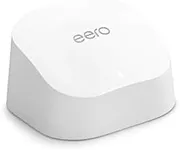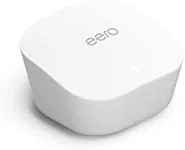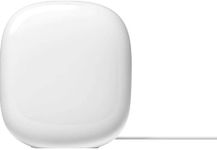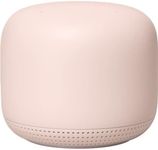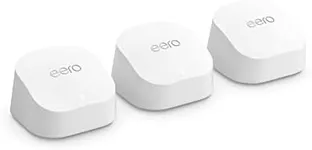Buying Guide for the Best Wi-Fi Range Extenders
Wi-Fi range extenders are devices designed to improve the coverage of your existing wireless network. They work by receiving your current Wi-Fi signal, amplifying it, and then transmitting the boosted signal. This can be particularly useful in larger homes or offices where the Wi-Fi signal may not reach certain areas. When choosing a Wi-Fi range extender, it's important to consider several key specifications to ensure you get the best performance for your needs.Coverage AreaThe coverage area of a Wi-Fi range extender indicates the maximum distance over which it can effectively boost your Wi-Fi signal. This is important because it determines how much additional space the extender can cover. Coverage areas are typically measured in square feet. For small apartments or single rooms, an extender with a coverage area of up to 1,000 square feet may be sufficient. For larger homes or offices, you might need an extender that covers 2,000 square feet or more. Consider the size of the area you need to cover and choose an extender that matches or exceeds that requirement.
SpeedThe speed of a Wi-Fi range extender is measured in megabits per second (Mbps) and indicates how fast data can be transmitted over the network. This is crucial for activities like streaming, gaming, or video conferencing, which require high-speed connections. Extenders typically come in different speed categories, such as 300 Mbps, 600 Mbps, or even higher. If you primarily use the internet for browsing and email, a lower speed extender may suffice. However, for high-bandwidth activities, opt for an extender with higher speeds to ensure smooth performance.
Frequency BandsWi-Fi range extenders operate on different frequency bands, usually 2.4 GHz and 5 GHz. The 2.4 GHz band offers a longer range but slower speeds, while the 5 GHz band provides faster speeds but a shorter range. Dual-band extenders can operate on both frequencies, offering a balance between range and speed. If you have a lot of devices connected to your network or engage in high-bandwidth activities, a dual-band extender is a good choice. For basic internet use, a single-band extender operating on 2.4 GHz may be sufficient.
CompatibilityCompatibility refers to whether the Wi-Fi range extender can work with your existing router and devices. Most modern extenders are designed to be compatible with a wide range of routers, but it's always a good idea to check. Look for extenders that support the same Wi-Fi standards as your router (e.g., 802.11ac, 802.11n). Ensuring compatibility will help you avoid connectivity issues and make the setup process smoother.
Ease of SetupEase of setup is an important consideration, especially if you're not very tech-savvy. Some Wi-Fi range extenders come with user-friendly setup processes, including mobile apps or web-based interfaces that guide you through the installation step-by-step. Others may have a WPS (Wi-Fi Protected Setup) button that allows for quick and easy pairing with your router. If you prefer a hassle-free setup, look for extenders that are known for their simplicity and ease of use.
Additional FeaturesSome Wi-Fi range extenders come with additional features that can enhance your network experience. These may include Ethernet ports for wired connections, signal strength indicators to help you find the optimal placement, or even built-in access points that create a new Wi-Fi network. Consider what additional features might be useful for your specific needs. For example, if you have devices that require a wired connection, an extender with Ethernet ports would be beneficial.


